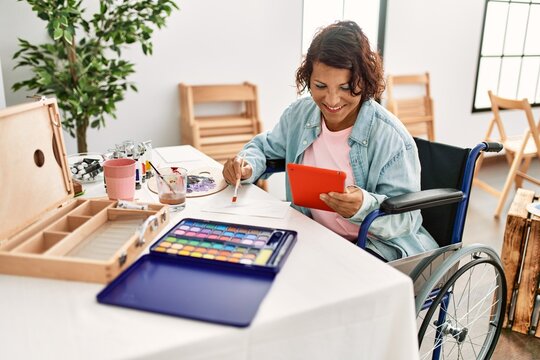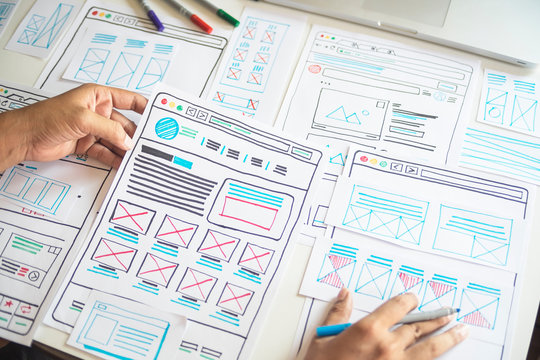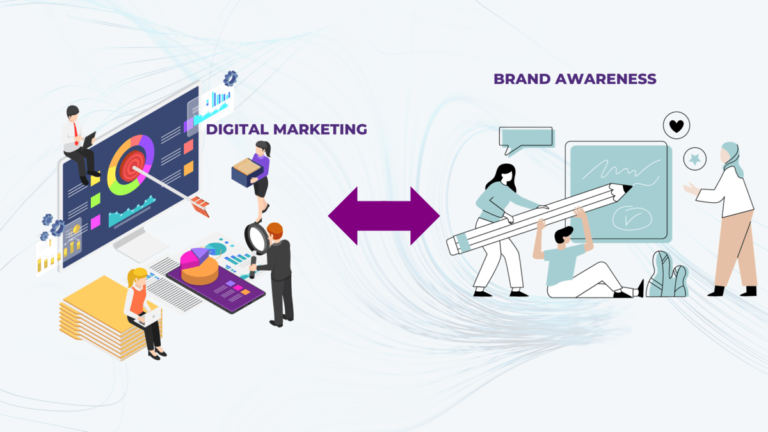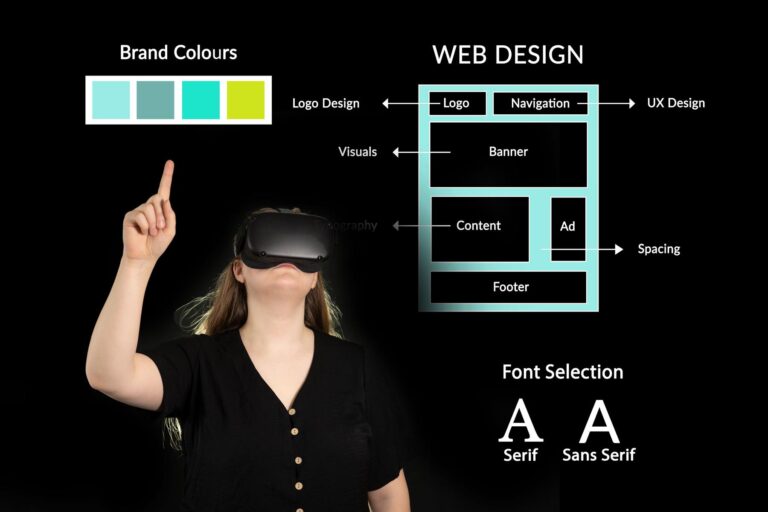UX/UI design is an essential part of creating digital experiences that are both functional and visually appealing. In today’s digital age, where users have high expectations for seamless experiences, UX/UI design plays a crucial role in creating products that stand out.
In this guide, we will explore the key principles, best practices, and latest trends in UX/UI design, as well as provide insights into successful examples and career opportunities in the field.
Whether you are a designer, developer, or business owner, understanding the importance of UX/UI design is crucial to creating effective digital experiences that meet the needs of modern users.
We’ve prepared a table of contents below for easy navigation through the article;

UX/UI Design Defined
User experience (UX) and user interface (UI) design are crucial components in creating an effective digital product. UX design refers to the process of designing the user experience of a digital product.
This involves understanding the user’s behaviour, needs, and goals, and creating a product that meets those needs effectively. UI design, on the other hand, is the process of designing the user interface of a digital product, which includes visual elements such as colours, typography, and layout.
Importance of UX/UI Design
Effective UX/UI design is essential for creating a digital product that users will enjoy using and find useful. When done well, UX/UI design can increase user engagement, customer satisfaction, and ultimately, business success.
In today’s competitive digital landscape, businesses that prioritize UX/UI design have a significant advantage over those that do not. Therefore, it is crucial to invest in UX/UI design to ensure the success of digital products.
Understanding UX/UI Design Principles
In order to understand UX/UI design, one must be familiar with the principles that guide it. Although UX and UI design are distinct, they share certain fundamental principles.

User Experience (UX) Design
UX design is centred on creating a product that caters to the user’s needs and expectations. Here are some key principles to consider when designing for UX:
- User Research: Understanding the user’s needs and goals is crucial to creating an effective digital product. User research involves gathering data through surveys, interviews, and other methods to comprehend the user’s behaviour and preferences.
- Information Architecture: Information architecture involves organizing and structuring information within a digital product. It involves creating a hierarchy of information that is easy for the user to navigate and find what they need.
-
Interaction Design: Interaction design is the process of designing how users interact with a digital product. It involves creating intuitive and easy-to-use navigation, buttons, and other interactive elements.
- Usability Testing: Usability testing entails testing the usability of a digital product with real users to identify any problems or areas for improvement. This helps ensure that the product is easy to use and meets the user’s needs.
User Interface (UI) Design
UI design is concerned with creating a visually appealing and easy-to-use interface for the user. Here are some key principles to consider when designing for UI:
- Colour Theory: Color plays a significant role in UI design. Colours can elicit emotions and convey meaning, so it’s important to choose the right colours for the product.
- Typography: Typography denotes the selection and arrangement of fonts in a digital product. It is essential for creating a readable and visually appealing interface.
- Layout: The layout of a digital product refers to the arrangement of content on the screen. It is important to create a clear and organized layout that is easy to navigate.
- Interaction Design: Interaction design is also important for UI design. It involves creating intuitive and easy-to-use navigation, buttons, and other interactive elements.

Accessibility in UX/UI Design
In UX/UI design, accessibility is an important consideration. It involves making digital products accessible to people with disabilities, including those with visual, auditory, or motor impairments. By designing for accessibility, designers can ensure that all users can access and use digital products effectively.
Some key considerations for accessibility in UX/UI design include:
- Colour Contrast: Ensuring that text and graphics have sufficient contrast for users with visual impairments.
- Alternative Text: Providing alternative text for images and other visual content for users with visual impairments.
- Keyboard Navigation: Ensuring that all interactive elements can be accessed and used with a keyboard for users with motor impairments.
- Captions and Transcripts: Providing captions and transcripts for audio and video content for users with auditory impairments.
By designing for accessibility, designers can create digital products that are inclusive and accessible to all users.

Examples of Successful UX/UI Design
To understand what makes for good UX/UI design, let’s examine some examples of successful digital products.
Airbnb
Airbnb is an online marketplace that connects travellers with local hosts who offer unique accommodations. The success of Airbnb can be attributed in part to its effective UX/UI design.
User Research
Airbnb has a sophisticated user research program that helps them understand the needs and preferences of their users. This allows them to tailor their design to meet the specific needs of their target audience.
Clear and Organized Layout
Airbnb’s website has a clear and organized layout that makes it easy for users to find what they need. The homepage features a prominent search bar, which allows users to quickly search for accommodations based on their preferred location, travel dates, and other criteria.
The website also makes use of filters and sorting options to help users refine their search results.
Intuitive Search Functionality
Airbnb’s search functionality is intuitive and easy to use. Users can search for accommodations based on a variety of criteria, such as location, price, and amenities. The search results are presented in a clear and concise manner, with high-quality photos of each property and a summary of its key features.
Visual Appeal
Airbnb’s website is visually appealing, with high-quality photos and a consistent design aesthetic. The use of large, high-quality images helps to showcase each property and create an aspirational feel for the brand.
Spotify
Spotify is a music streaming platform that has become a household name. Spotify’s success can be attributed in part to its effective UX/UI design.
Personalization
Spotify’s design is highly personalized, with customized playlists, recommendations, and radio stations based on the user’s listening history. This creates a more engaging and relevant experience for the user, which can help to increase user retention and loyalty.
Clear and Organized Layout
Spotify’s interface is clear and organized, making it easy for users to find the music they want to listen to. The homepage features a prominent search bar, which allows users to quickly search for artists, songs, or albums.
The website also makes use of filters and sorting options to help users refine their search results.
Intuitive Navigation
Spotify’s navigation is intuitive and easy to use. Users can easily switch between playlists, search for music, and access their account settings. The website also features a “Discover” section, which showcases new and popular music based on the user’s listening habits.
Visual Appeal
Spotify’s design is visually appealing, with high-quality album art and a consistent design aesthetic. The use of large images and bold typography helps to create a visually engaging experience for the user.

Best Practices for UX/UI Design
In this section, we will explore some best practices for UX/UI design that can help you create effective digital experiences.
UX Design Best Practices
When it comes to UX design, following best practices can help create designs that users find intuitive and easy to use. Here are some UX design best practices to consider:
- Research and Analysis: Before starting the design process, it’s important to conduct user research and analysis. This involves gathering data about the user’s behaviour, needs, and preferences and using that data to inform the design process.
- Wireframing and Prototyping: Wireframes and prototypes are essential for testing and iterating on UX design. They allow designers to quickly test different design ideas and make changes before committing to a final design.
- Testing and Iteration: Usability testing and iteration are crucial for improving the UX design. By testing the product with real users and making changes based on their feedback, designers can create a product that meets the user’s needs and expectations.
UI Design Best Practices
In addition to UX design, following UI design best practices can help create visually appealing and easy-to-use designs. Here are some UI design best practices to consider:
- Colour Theory and Typography: Color theory and typography are essential for creating a visually appealing and easy-to-use UI. Designers should choose colours and fonts that are easy to read and convey the desired tone and emotion.
- Layout and Composition: The layout and composition of a UI design should be clear and organized, making it easy for users to navigate and find what they need.
- Navigation and Interaction Design: Navigation and interaction design are essential for creating an intuitive and easy-to-use UI. Designers should create intuitive navigation menus and interactive elements that are easy to use and understand.
By following these best practices, designers can create digital experiences that are user-friendly, visually appealing, and meet the needs of their target audience.
The Impact of UX/UI Design on User Experience
When it comes to digital product design, user experience (UX) and user interface (UI) design play a crucial role in creating an experience that meets user needs and expectations. In combination, UX/UI design can have a significant impact on user experience.
By incorporating effective UX/UI design principles, a digital product can provide an engaging and satisfying experience for users. It can make it easy for users to find what they need, accomplish tasks efficiently, and overall, enjoy their experience with the product.
Take, for example, Airbnb’s UX/UI design. It includes user research, a clear and organized layout, intuitive search functionality, and visual appeal. The result is a website that is easy to navigate and visually pleasing, which encourages users to book accommodations and feel confident in their choices.
Similarly, Spotify’s UX/UI design includes personalization, a clear and organized layout, intuitive navigation, and visual appeal. This design enables users to find and listen to their favourite music with ease and enjoy a personalized experience.
Overall, investing in UX/UI design can have a positive impact on user experience and business success. When a digital product is designed with the user in mind, it can increase customer satisfaction and engagement, resulting in a competitive advantage for the business.

Latest Trends and Developments in UX/UI Design
As the world of UX/UI design continues to evolve, designers must keep up with the latest trends and developments to create effective digital experiences. Here are some of the key trends and developments that are shaping the future of UX/UI design:
Voice User Interface (VUI)
Voice user interface (VUI) is becoming increasingly popular in digital products. With VUI, users can interact with the product using voice commands, making the experience more efficient and intuitive.
As voice recognition technology continues to improve, VUI is expected to become more prevalent in various digital products.
Augmented Reality (AR)
Augmented reality (AR) is a technology that overlays digital information on the physical world, creating immersive and interactive experiences for users. AR is being used in UX/UI design to enhance the user experience, particularly in areas such as gaming, education, and tourism.
With the popularity of AR-enabled devices such as smartphones and tablets, we can expect to see more AR integration in UX/UI design.
Virtual Reality (VR)
Virtual reality (VR) is another emerging technology that is being used in UX/UI design. By creating a simulated environment, VR can provide users with an immersive and interactive experience.
VR is being used in various industries such as gaming, healthcare, and education to create engaging experiences for users. As VR technology continues to improve, we can expect to see more VR integration in UX/UI design.
Design Systems
Design systems are becoming a popular way for designers to create consistent and scalable designs across products and platforms. Design systems provide a set of guidelines and standards for design elements such as typography, colour, and layout.
By streamlining the design process, design systems can help designers create more efficient and effective designs.
Keeping up with the latest trends and developments in UX/UI design is essential for designers who want to create digital products that meet the needs and expectations of users.
By incorporating emerging technologies and design systems, designers can create innovative and effective digital products that stand out in a competitive market.

Career Opportunities in UX/UI Design
UX/UI design is a rapidly growing field with a broad range of career opportunities for those interested in pursuing design. Here are some of the most common career paths in UX/UI design:
UX/UI Designer
A UX/UI designer is responsible for creating the overall user experience and interface of digital products. They work closely with developers, product managers, and other stakeholders to ensure the final product meets the user’s needs while also meeting business goals.
Their work includes research and analysis of user needs, development of wireframes and prototypes, and testing and iterating on the design.
Product Designer
A product designer is responsible for the overall design of a digital product, including UX/UI design, visual design, and branding.
They work closely with UX/UI designers, developers, and other stakeholders to ensure the final product meets the user’s needs and aligns with the brand’s overall visual identity.
User Researcher
A user researcher is responsible for gathering data about the user’s behaviour, needs, and preferences and using that data to inform the design process. They conduct research through various methods such as surveys, interviews, and user testing to gather insights that will help shape the final product.
Their work helps ensure that the final product meets the user’s needs and expectations.
Information Architect
An information architect is responsible for organizing and structuring the content of digital products such as websites and apps. They work closely with UX/UI designers to ensure that the design is easy to navigate and that the content is organized in a way that makes sense to the user.
Interaction Designer
An interaction designer is responsible for designing the ways in which users interact with digital products. They work closely with UX/UI designers to develop intuitive and engaging interactions that enhance the overall user experience.
Visual Designer
A visual designer is responsible for creating the visual elements of digital products such as websites and apps. They work closely with UX/UI designers to ensure that the design is visually appealing and aligns with the brand’s overall visual identity.
UX Writer
A UX writer is responsible for creating the copy and content that appears within digital products such as websites and apps. They work closely with UX/UI designers to ensure that the language used is clear, concise, and aligned with the overall brand voice.
Whether you are interested in UX/UI design, user research, or visual design, there are many career opportunities available in this fast-growing field.
UX/UI Design Tools and Resources
To create effective UX/UI designs, it’s important to use the right tools and resources. Here are some popular and highly recommended ones:
Design Tools
- Figma: Figma is a cloud-based design tool that allows designers to collaborate on designs in real time. With its intuitive interface and powerful collaboration features, Figma is a popular choice for UX/UI designers.
- Adobe XD: Adobe XD is a design tool that allows designers to create and prototype UX/UI designs. With its vector design tools and intuitive prototyping features, Adobe XD is a great choice for designers who want to create high-fidelity designs.
- Sketch: Sketch is a vector-based design tool for Mac that is popular among UI designers. With its intuitive interface and powerful plugins, Sketch is a great choice for creating high-quality UI designs.
Prototyping Tools
- InVision: InVision is a prototyping tool that allows designers to create interactive prototypes of their designs. With its easy-to-use interface and powerful collaboration features, InVision is a popular choice for UX/UI designers.
- Axure: Axure is a powerful prototyping tool that allows designers to create complex interactions and animations. With its advanced features and robust documentation capabilities, Axure is a great choice for creating high-fidelity prototypes.
Resources
- Nielsen Norman Group: Nielsen Norman Group is a research firm that specializes in UX design. Their website provides a wealth of information on UX design principles, best practices, and research findings.
- Smashing Magazine: Smashing Magazine is a popular blog that covers a wide range of topics related to UX/UI design. Their articles are well-researched and provide practical insights and tips for designers.
- UX Design: UX Design is a popular online publication that covers the latest trends and developments in UX design. With a focus on practical tips and insights, UX Design is a great resource for designers looking to stay up-to-date on the latest trends and best practices.
By using these tools and resources, you can create high-quality UX/UI designs that are both effective and visually appealing.
Lastly,
In summary, UX/UI design is a crucial aspect of creating successful digital products. By understanding the principles, examples, and best practices of UX/UI design, designers can deliver products that are intuitive, user-friendly, and meet the user’s needs.
As the world of UX/UI design continues to evolve, it is vital for designers to keep up with the latest trends and developments in the industry. By investing in UX/UI design and prioritizing accessibility, designers can create digital products that are inclusive and accessible to all users.
Remember, creating great UX/UI design is an iterative process that requires constant testing, iteration, and improvement. Whether you are just getting started or looking to take your skills to the next level, there are always opportunities to learn and grow as a UX/UI designer.
If you enjoyed this article, be sure to check out our other content on UX/UI design, which includes more in-depth guides, case studies, and expert insights on the latest trends and developments in the field.









